Educational Insights丨Early Years and the Digital Age
28 May 2020
In this Educational Insights Series, experts from across the Wellington College group give advice, practical help and tips for parents who are keen to give further support for their children's learning. In this article from the series, the Head of Early Years - Dionne Zantua discusses and reflects on ‘Early Years and the Digital Age'.

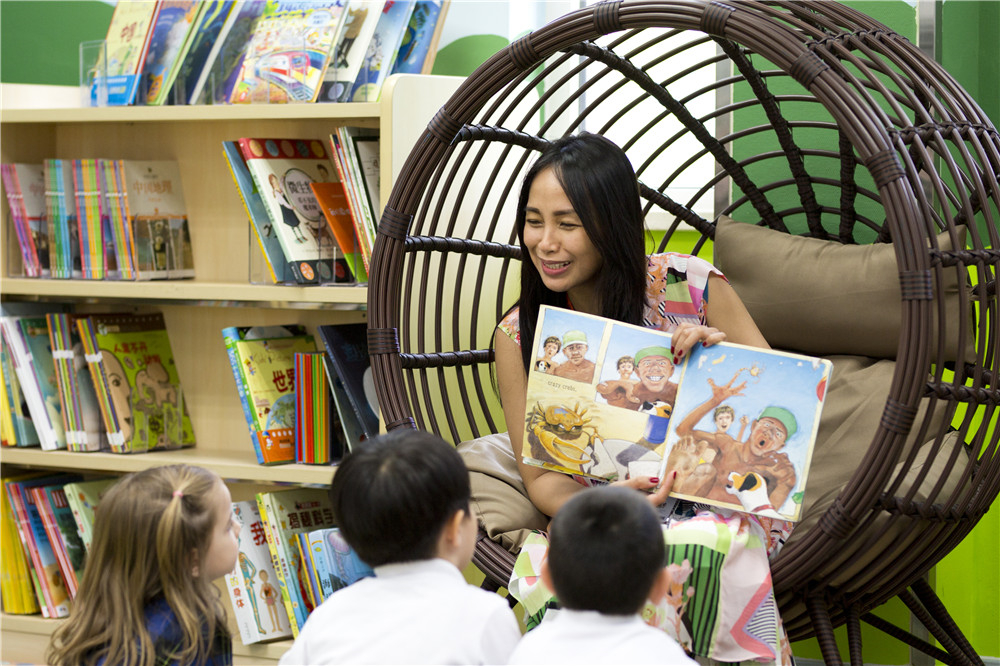 The obvious benefit that digital technology has offered during this time is that it has allowed schools to extend their reach in teaching and learning at home. The sophistication of current digital technology available to our children has reached new heights and it is important to protect children from potentially harmful technologies.
The obvious benefit that digital technology has offered during this time is that it has allowed schools to extend their reach in teaching and learning at home. The sophistication of current digital technology available to our children has reached new heights and it is important to protect children from potentially harmful technologies.
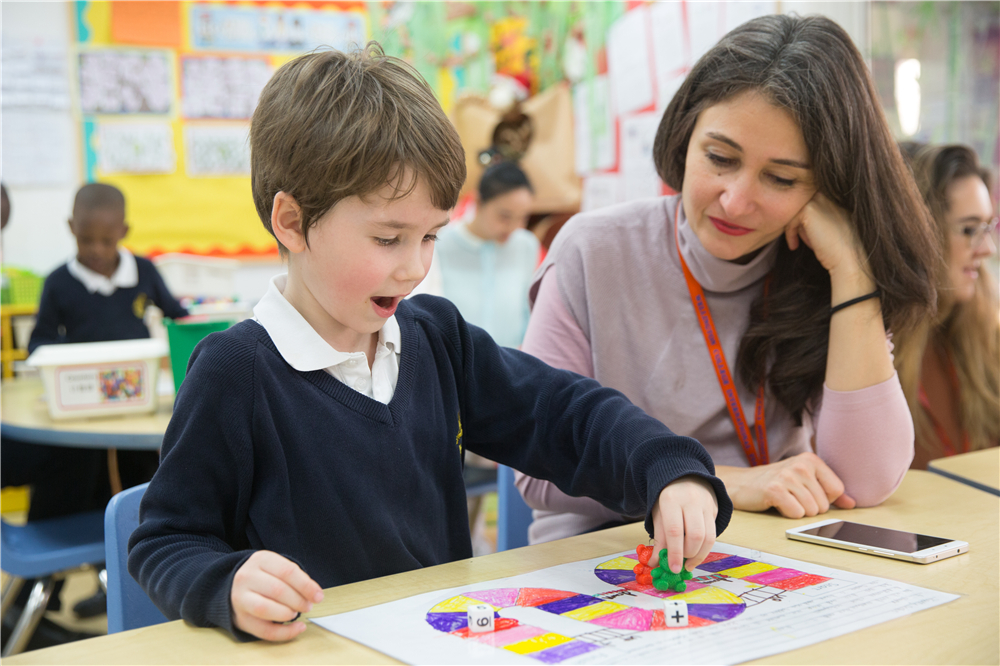 Parents and educators must assess the use of digital technology across the following criteria: balance, quality and building relationships.
01
Balance
Children need a healthy dose of both the natural and man-made environment. “Sitting the children in front of the computer, the television or even an adult during 'sharing' or 'story time' has to be balanced with opportunities for the children to move around in their play within and outside the setting” (Siraj-Blatchford, 2010). Otherwise, they will gravitate towards one and lose touch with the other. Children who spend a long amount of time using devices instead of interacting with peers may weaken their ability to connect with others and thus damage their social skills. Devoid of interpersonal interactions, many of these children avoid eye contact, for example.
Parents and educators must assess the use of digital technology across the following criteria: balance, quality and building relationships.
01
Balance
Children need a healthy dose of both the natural and man-made environment. “Sitting the children in front of the computer, the television or even an adult during 'sharing' or 'story time' has to be balanced with opportunities for the children to move around in their play within and outside the setting” (Siraj-Blatchford, 2010). Otherwise, they will gravitate towards one and lose touch with the other. Children who spend a long amount of time using devices instead of interacting with peers may weaken their ability to connect with others and thus damage their social skills. Devoid of interpersonal interactions, many of these children avoid eye contact, for example.
 Apps and videos that promote physical activity should complement the ability to be outdoors whenever possible. There is overwhelming evidence that argues that being outdoors has a positive impact on children: they learn to develop a sense of self, independence, confidence, creativity, decision-making and problem-solving skills, empathy towards others, motor skills, self-discipline and initiative (Kellert, 2005).
02
Quality
Effective digital technology education should encourage off-screen time. Not all digital technology is created equal and parents need to be savvy and investigate whether digital tools inspire creativity and activity. Digital technology should be one of many tools to promote learning and not the sole means thereof.
Apps and videos that promote physical activity should complement the ability to be outdoors whenever possible. There is overwhelming evidence that argues that being outdoors has a positive impact on children: they learn to develop a sense of self, independence, confidence, creativity, decision-making and problem-solving skills, empathy towards others, motor skills, self-discipline and initiative (Kellert, 2005).
02
Quality
Effective digital technology education should encourage off-screen time. Not all digital technology is created equal and parents need to be savvy and investigate whether digital tools inspire creativity and activity. Digital technology should be one of many tools to promote learning and not the sole means thereof.
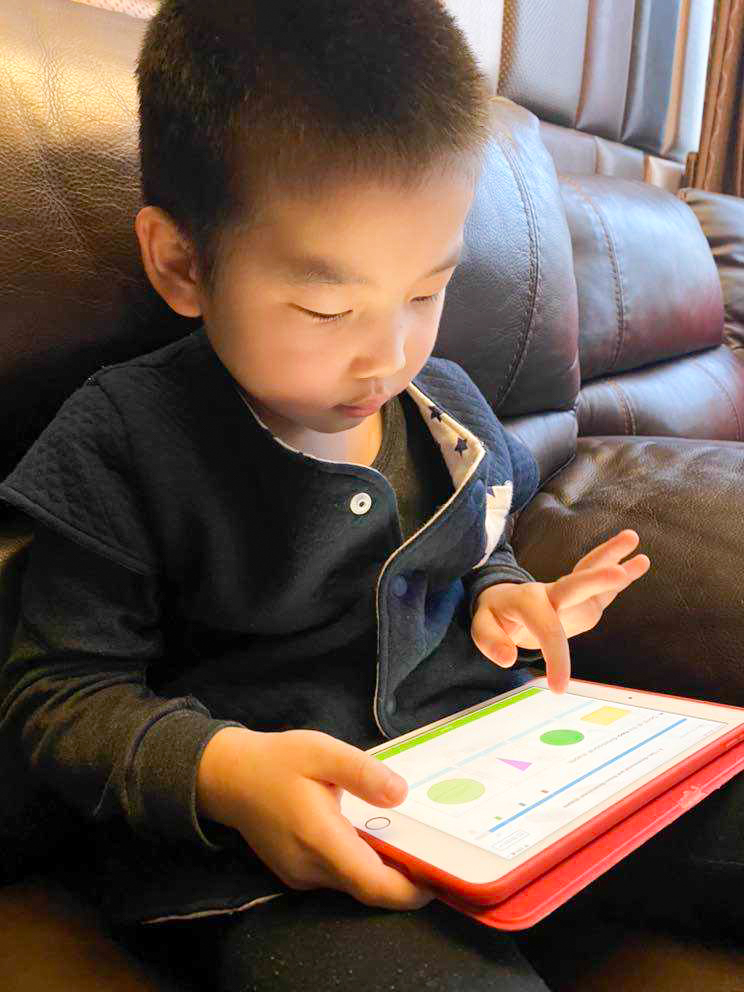 There are of course, many positives about appropriate technology use. Interactive media forms allow children to take charge of their learning and act as a scaffold to developing their thinking. I had a pupil who, after reading the story ‘How do dinosaurs go to school?’ by Jane Yolen and Mark Teague, became very interested in learning about dinosaurs. He researched dinosaur books in the class library, built dinosaurs in the construction area and made dinosaur dens at our small world corner. By this time, there was a larger group of other children eager to learn. In order to encourage deeper learning about dinosaurs, we used our class iPads to find out more about them. In allowing children to see vivid imagery of dinosaurs through technology, their motivation to learn became intrinsic and our class literacy board was soon filled with their best writing about dinosaurs. The most effective way for children to learn is when they ask, see, hear, think, do and experience what they are learning about.
There are of course, many positives about appropriate technology use. Interactive media forms allow children to take charge of their learning and act as a scaffold to developing their thinking. I had a pupil who, after reading the story ‘How do dinosaurs go to school?’ by Jane Yolen and Mark Teague, became very interested in learning about dinosaurs. He researched dinosaur books in the class library, built dinosaurs in the construction area and made dinosaur dens at our small world corner. By this time, there was a larger group of other children eager to learn. In order to encourage deeper learning about dinosaurs, we used our class iPads to find out more about them. In allowing children to see vivid imagery of dinosaurs through technology, their motivation to learn became intrinsic and our class literacy board was soon filled with their best writing about dinosaurs. The most effective way for children to learn is when they ask, see, hear, think, do and experience what they are learning about.
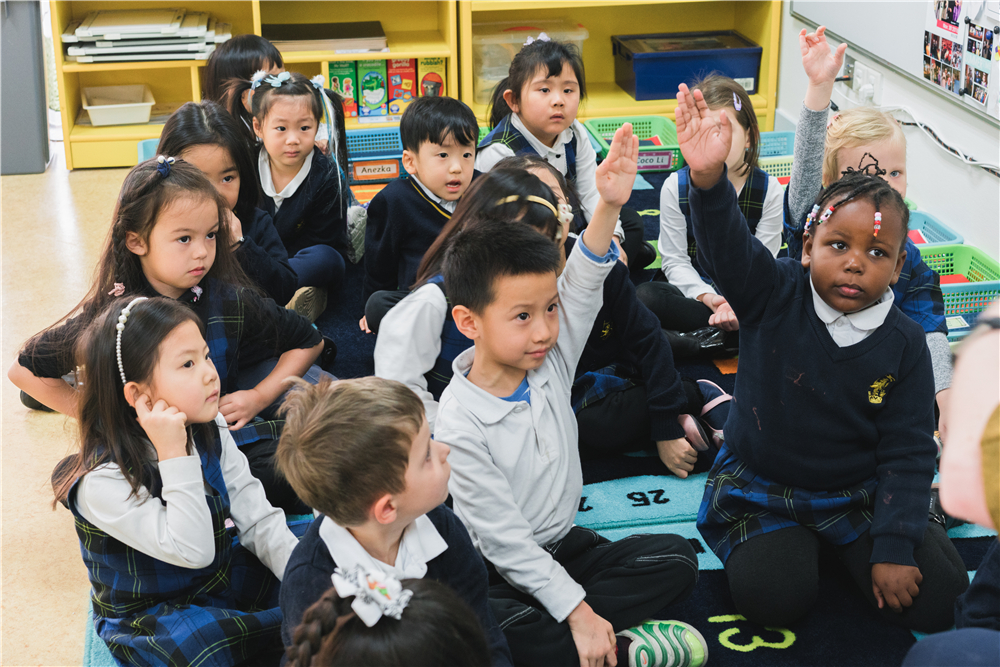 03
Building Relationships
The proliferation of digital technology has meant schools across the world can continue to deliver learning among its pupils during this unprecedented time. It has afforded our teachers the chance to continue to build and maintain relationships among children and their families. During my virtual learning walks around our Teams live lessons, children’s happiness and engagement, the minute they see their teachers and peers on the screen, is so palpable.
03
Building Relationships
The proliferation of digital technology has meant schools across the world can continue to deliver learning among its pupils during this unprecedented time. It has afforded our teachers the chance to continue to build and maintain relationships among children and their families. During my virtual learning walks around our Teams live lessons, children’s happiness and engagement, the minute they see their teachers and peers on the screen, is so palpable.
 Parents can seek advice, ask questions and report on their children’s progress through Tapestry, our online digital portfolio. This allows parents to download photos and videos of their child’s work, thus preserving their milestones and development. Teachers are also able to provide valuable learning such as carefully planned activities, video and audio clips and links to a wide variety of online resources.
Parents can seek advice, ask questions and report on their children’s progress through Tapestry, our online digital portfolio. This allows parents to download photos and videos of their child’s work, thus preserving their milestones and development. Teachers are also able to provide valuable learning such as carefully planned activities, video and audio clips and links to a wide variety of online resources.
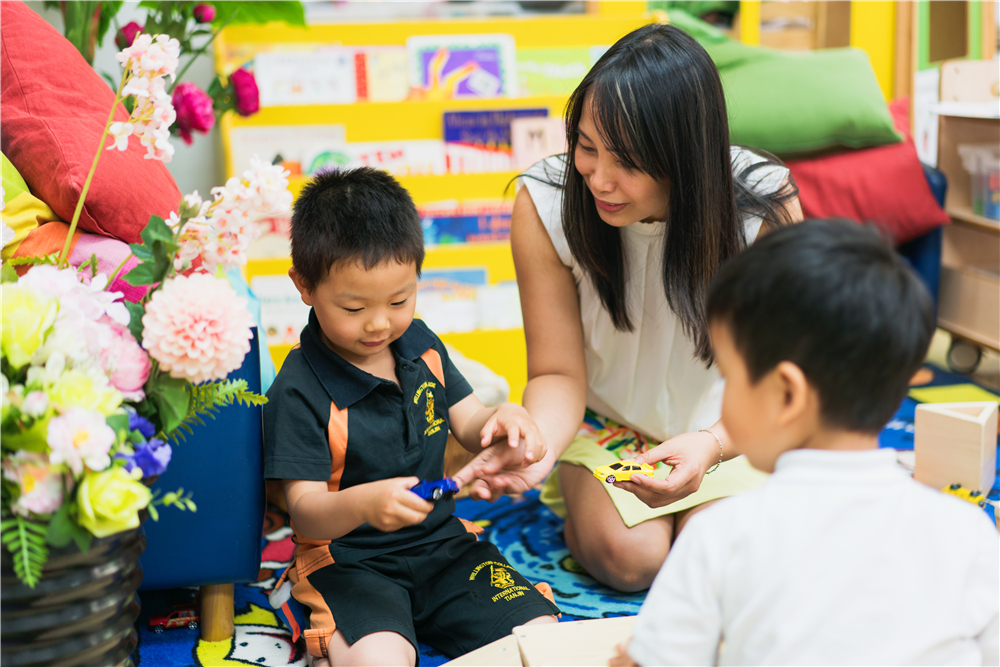 Finally, in a world where quarantine, isolation and social distancing have become the norm, the flicker of light in technological devices seemingly gives hope that even in such circumstances. The digital age has allowed us to stay connected.
References
Finally, in a world where quarantine, isolation and social distancing have become the norm, the flicker of light in technological devices seemingly gives hope that even in such circumstances. The digital age has allowed us to stay connected.
References
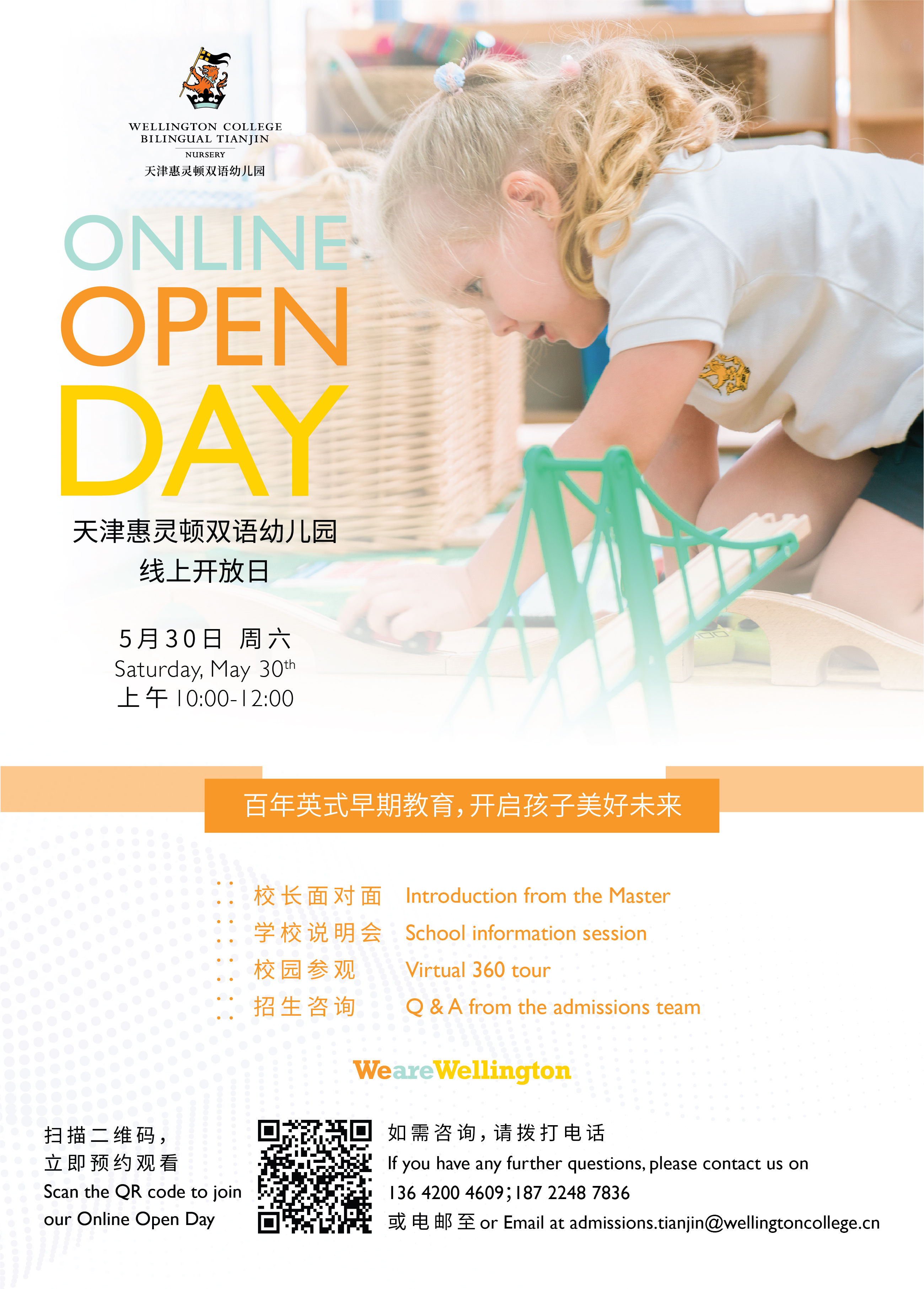

From the Head of Early Years
Dionne Zantua
Teachers in early years recognise that, for children to fully develop in their social, physical, cognitive and language skills, this must be realised through practical hands-on learning in their real-life environment. I believe that an understanding of digital technology has to be accepted as an essential life skill because of its growing influence in our lives. We already educate children in pre-reading skills such as how to hold a book upright and how to turn pages from left to right. Children also need to learn how to operate simple digital tools to prepare them to navigate more complex technologies. Part of this generation’s social culture involves digital technology and we are now living in the digital age. The obvious benefit that digital technology has offered during this time is that it has allowed schools to extend their reach in teaching and learning at home. The sophistication of current digital technology available to our children has reached new heights and it is important to protect children from potentially harmful technologies.
The obvious benefit that digital technology has offered during this time is that it has allowed schools to extend their reach in teaching and learning at home. The sophistication of current digital technology available to our children has reached new heights and it is important to protect children from potentially harmful technologies.
 Parents and educators must assess the use of digital technology across the following criteria: balance, quality and building relationships.
01
Balance
Children need a healthy dose of both the natural and man-made environment. “Sitting the children in front of the computer, the television or even an adult during 'sharing' or 'story time' has to be balanced with opportunities for the children to move around in their play within and outside the setting” (Siraj-Blatchford, 2010). Otherwise, they will gravitate towards one and lose touch with the other. Children who spend a long amount of time using devices instead of interacting with peers may weaken their ability to connect with others and thus damage their social skills. Devoid of interpersonal interactions, many of these children avoid eye contact, for example.
Parents and educators must assess the use of digital technology across the following criteria: balance, quality and building relationships.
01
Balance
Children need a healthy dose of both the natural and man-made environment. “Sitting the children in front of the computer, the television or even an adult during 'sharing' or 'story time' has to be balanced with opportunities for the children to move around in their play within and outside the setting” (Siraj-Blatchford, 2010). Otherwise, they will gravitate towards one and lose touch with the other. Children who spend a long amount of time using devices instead of interacting with peers may weaken their ability to connect with others and thus damage their social skills. Devoid of interpersonal interactions, many of these children avoid eye contact, for example.
 Apps and videos that promote physical activity should complement the ability to be outdoors whenever possible. There is overwhelming evidence that argues that being outdoors has a positive impact on children: they learn to develop a sense of self, independence, confidence, creativity, decision-making and problem-solving skills, empathy towards others, motor skills, self-discipline and initiative (Kellert, 2005).
02
Quality
Effective digital technology education should encourage off-screen time. Not all digital technology is created equal and parents need to be savvy and investigate whether digital tools inspire creativity and activity. Digital technology should be one of many tools to promote learning and not the sole means thereof.
Apps and videos that promote physical activity should complement the ability to be outdoors whenever possible. There is overwhelming evidence that argues that being outdoors has a positive impact on children: they learn to develop a sense of self, independence, confidence, creativity, decision-making and problem-solving skills, empathy towards others, motor skills, self-discipline and initiative (Kellert, 2005).
02
Quality
Effective digital technology education should encourage off-screen time. Not all digital technology is created equal and parents need to be savvy and investigate whether digital tools inspire creativity and activity. Digital technology should be one of many tools to promote learning and not the sole means thereof.
 There are of course, many positives about appropriate technology use. Interactive media forms allow children to take charge of their learning and act as a scaffold to developing their thinking. I had a pupil who, after reading the story ‘How do dinosaurs go to school?’ by Jane Yolen and Mark Teague, became very interested in learning about dinosaurs. He researched dinosaur books in the class library, built dinosaurs in the construction area and made dinosaur dens at our small world corner. By this time, there was a larger group of other children eager to learn. In order to encourage deeper learning about dinosaurs, we used our class iPads to find out more about them. In allowing children to see vivid imagery of dinosaurs through technology, their motivation to learn became intrinsic and our class literacy board was soon filled with their best writing about dinosaurs. The most effective way for children to learn is when they ask, see, hear, think, do and experience what they are learning about.
There are of course, many positives about appropriate technology use. Interactive media forms allow children to take charge of their learning and act as a scaffold to developing their thinking. I had a pupil who, after reading the story ‘How do dinosaurs go to school?’ by Jane Yolen and Mark Teague, became very interested in learning about dinosaurs. He researched dinosaur books in the class library, built dinosaurs in the construction area and made dinosaur dens at our small world corner. By this time, there was a larger group of other children eager to learn. In order to encourage deeper learning about dinosaurs, we used our class iPads to find out more about them. In allowing children to see vivid imagery of dinosaurs through technology, their motivation to learn became intrinsic and our class literacy board was soon filled with their best writing about dinosaurs. The most effective way for children to learn is when they ask, see, hear, think, do and experience what they are learning about.
 03
Building Relationships
The proliferation of digital technology has meant schools across the world can continue to deliver learning among its pupils during this unprecedented time. It has afforded our teachers the chance to continue to build and maintain relationships among children and their families. During my virtual learning walks around our Teams live lessons, children’s happiness and engagement, the minute they see their teachers and peers on the screen, is so palpable.
03
Building Relationships
The proliferation of digital technology has meant schools across the world can continue to deliver learning among its pupils during this unprecedented time. It has afforded our teachers the chance to continue to build and maintain relationships among children and their families. During my virtual learning walks around our Teams live lessons, children’s happiness and engagement, the minute they see their teachers and peers on the screen, is so palpable.
 Parents can seek advice, ask questions and report on their children’s progress through Tapestry, our online digital portfolio. This allows parents to download photos and videos of their child’s work, thus preserving their milestones and development. Teachers are also able to provide valuable learning such as carefully planned activities, video and audio clips and links to a wide variety of online resources.
Parents can seek advice, ask questions and report on their children’s progress through Tapestry, our online digital portfolio. This allows parents to download photos and videos of their child’s work, thus preserving their milestones and development. Teachers are also able to provide valuable learning such as carefully planned activities, video and audio clips and links to a wide variety of online resources.
 Finally, in a world where quarantine, isolation and social distancing have become the norm, the flicker of light in technological devices seemingly gives hope that even in such circumstances. The digital age has allowed us to stay connected.
References
Finally, in a world where quarantine, isolation and social distancing have become the norm, the flicker of light in technological devices seemingly gives hope that even in such circumstances. The digital age has allowed us to stay connected.
References
- Anderson, D.R., & T.A. Pempek. 2005. “Television and Very Young Children.” American Behavioral Scientist 48 (5): 505–22.
- Appel, A.E., & C. O’Gara. 2001. “Technology and Young Children: A Review of Literature.” TechKnowLogia 3 (5): 35–36. http://ict.aed.org/ infocenter/pdfs/technologyandyoung.pdf
- Christakis, D.A., F.J. Zimmerman, D.L. DiGiuseppe, & C.A. McCarty. 2004. “Early Television Exposure and Subsequent Attentional Problems in Children.” Paediatrics 113 (4): 708–13. http://pediatrics.aappublications. org/content/113/4/708.full.html
- Cordes, C., & E. Miller, eds. 2000. Fool’s Gold: A Critical Look at Computers in Childhood. College Park, MD: Alliance for Childhood. http://drupal6.allianceforchildhood.org/fools_gold
- Kellert, S.R. 2005. Nature and childhood development.” In Building for Life: Designing and Understanding the Human-Nature Connection. Washington, D.C.: Island Press. Full book available via Amazon.com and other commercial sources. http://www.cnaturenet.org/02_rsrch_studies/PDFs/Kellert_BuildingforLife.pdf
- Rogow, F. 2007. Two View or Not Two View: A Review of the Research Literature on the Advisability of Television Viewing for Infants and Toddlers. Ithaca, NY: Insighters Educational Consulting. www.kqed. org/assets/pdf/education/earlylearning/media-symposium/tv-undertwo-rogow.pdf?trackurl=true
- Siraj-Blatchford, J. 2010. Retrieved from https://www.nurseryworld.co.uk/news/article/analysis-computers-benefit-children

Related Articles

Teaching Art Skills in the Early Years Classroom23 Jan 2025
Ms Justine BroadhurstReception Teacher / Nest 21st Century STEAM Curriculum Lead Art has long been considered a fundamental aspect of human expression and culture, transcending geographical and physic
Read More

Global Cuisine Event Highlights in Wellington10 Jan 2025
Last semester, Wellington College Tianjin, in collaboration with Sodexo, hosted an array of vibrant food-themed events. Centred around the themes of "Global Citizenship" and "Sustainable Development,
Read More

Early Years Staff Training23 Aug 2024
Melissa MeyersCo-Head of Early Years/Head of Junior School This past week we have had lots of fun training together as part of our professional development to prepare for the new academic year. Staff
Read More





 Channel
Channel 
 Linkedin
Linkedin  Weibo
Weibo  Facebook
Facebook  Ins
Ins 







